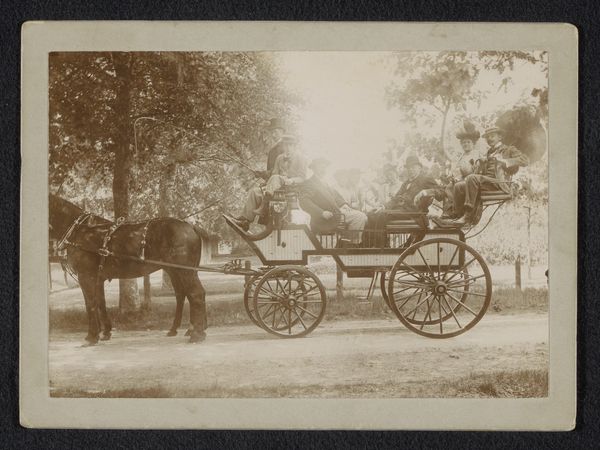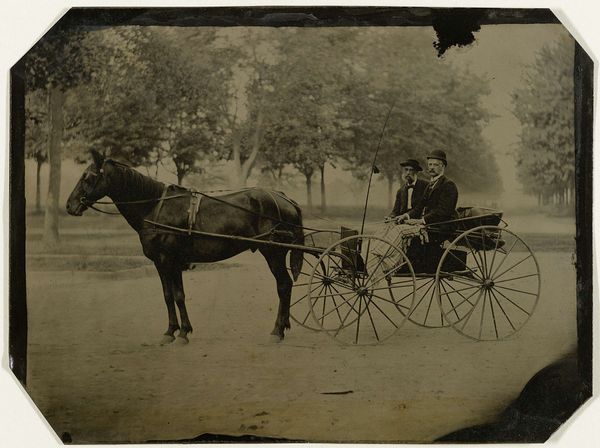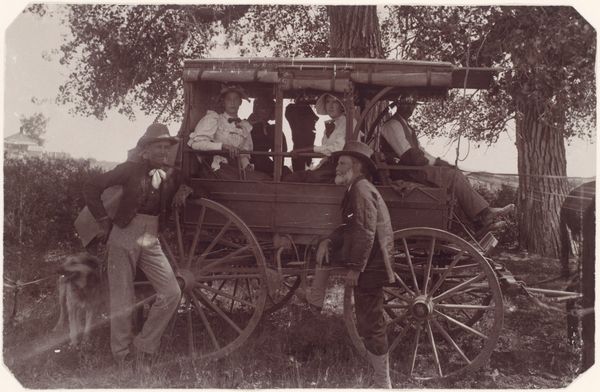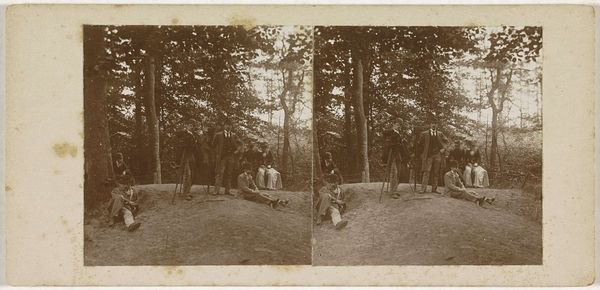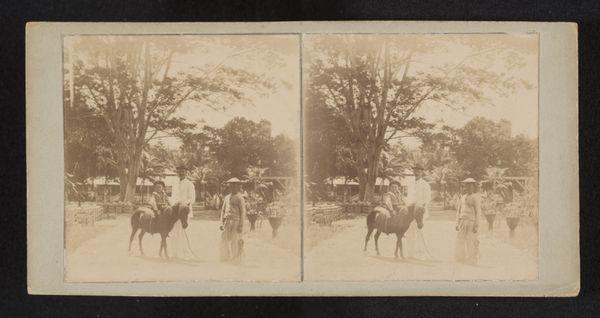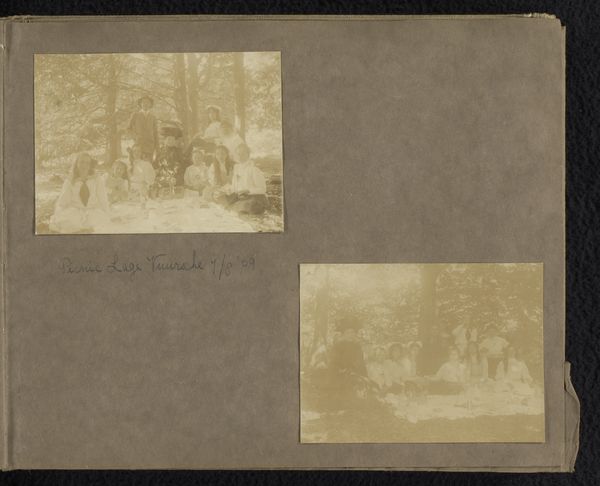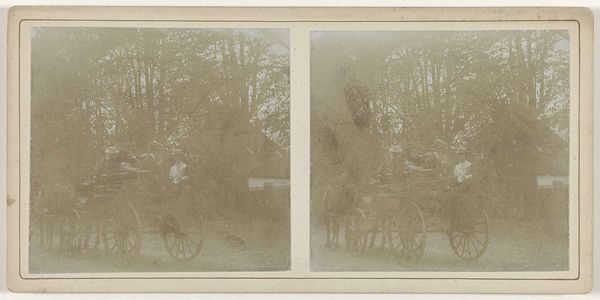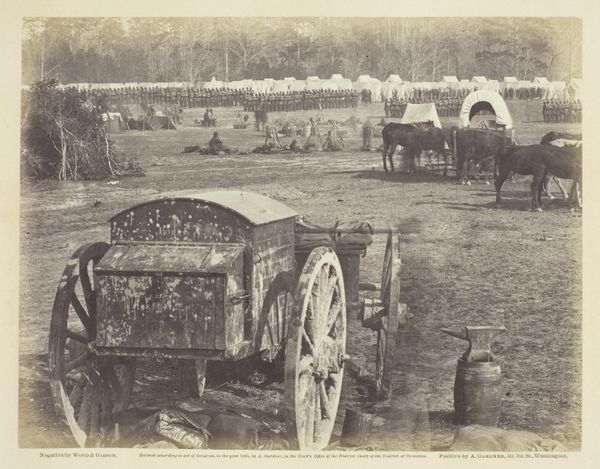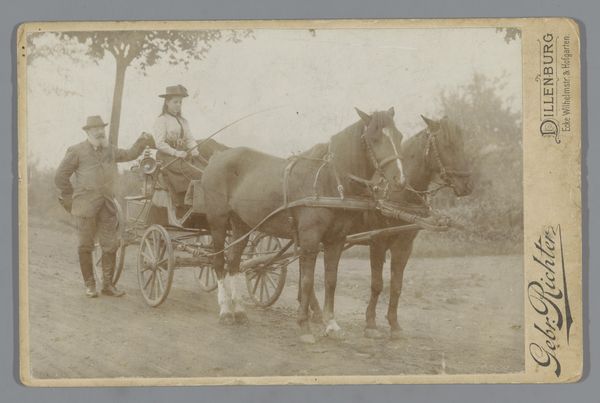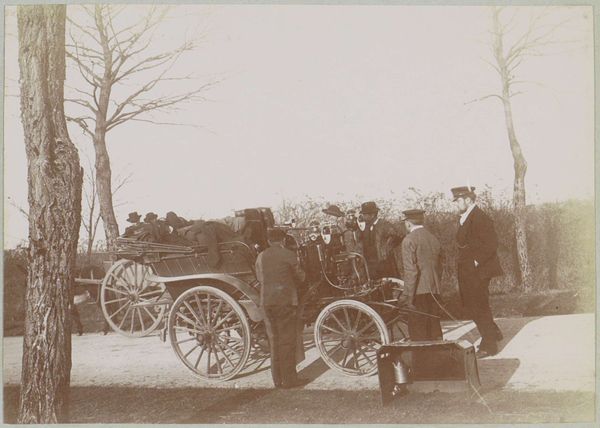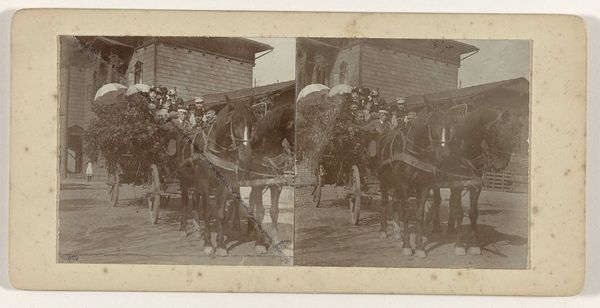
photography
#
portrait
#
pictorialism
#
landscape
#
photography
Dimensions: height 80 mm, width 77 mm, height 90 mm, width 178 mm
Copyright: Rijks Museum: Open Domain
Curator: This remarkable photograph, dating from between 1910 and 1915, captures the Ten Cate family in their carriage. It's simply titled "Het echtpaar Ten Cate in een rijtuig," which translates to "The Ten Cate couple in a carriage." Editor: Immediately, I’m drawn to the monochromatic palette and the depth created by the framing. The dark horse, carriage, and figures stand in contrast to the lighter backdrop of the trees. It evokes a strong sense of early 20th-century formality. Curator: Formally, this photograph seems to be a fine example of pictorialism with its soft focus intended to give it an aesthetic quality more akin to painting. But consider also the social context here—the Ten Cate family were prominent industrialists. The photograph serves not just as art, but as a record of their wealth, status, and the visible manifestation of labor through horse-drawn transport. Editor: Yes, and note the structural complexity. The lines of the trees lead the eye inward, contrasting beautifully with the circular forms of the wheels. This photograph also creates interesting visual rhythm by balancing light and shadow across its surface. Curator: Right, and those details would be down to technique and choices related to production! This type of formal family portrait speaks volumes about class structure during this period. They would have acquired the vehicle and services by paid work to workers for maintaining carriages, caring for horses, and then engaging the photographer to create the image for wider circulation. The Ten Cate family aren't just a subject but active agents within capitalist infrastructure. Editor: Well, without going into class analysis too much, don't you think it’s remarkable how the limited sepia tones evoke a sense of nostalgia, despite knowing little about their daily lives or social position? It presents an image that blends elegance and perhaps also restraint; perhaps this image invites further thought about formal portraiture itself? Curator: True. Considering what photography meant to emerging family power structures reveals much of both historical context within capitalist social norms and art that both represent the image but are representative about how things were. Editor: Indeed. So it looks like analyzing this photograph through a historical material lens and formal properties both highlight very interesting aspects which add dimension and intrigue to this captured moment of a well-to-do couple out for a carriage ride.
Comments
No comments
Be the first to comment and join the conversation on the ultimate creative platform.
